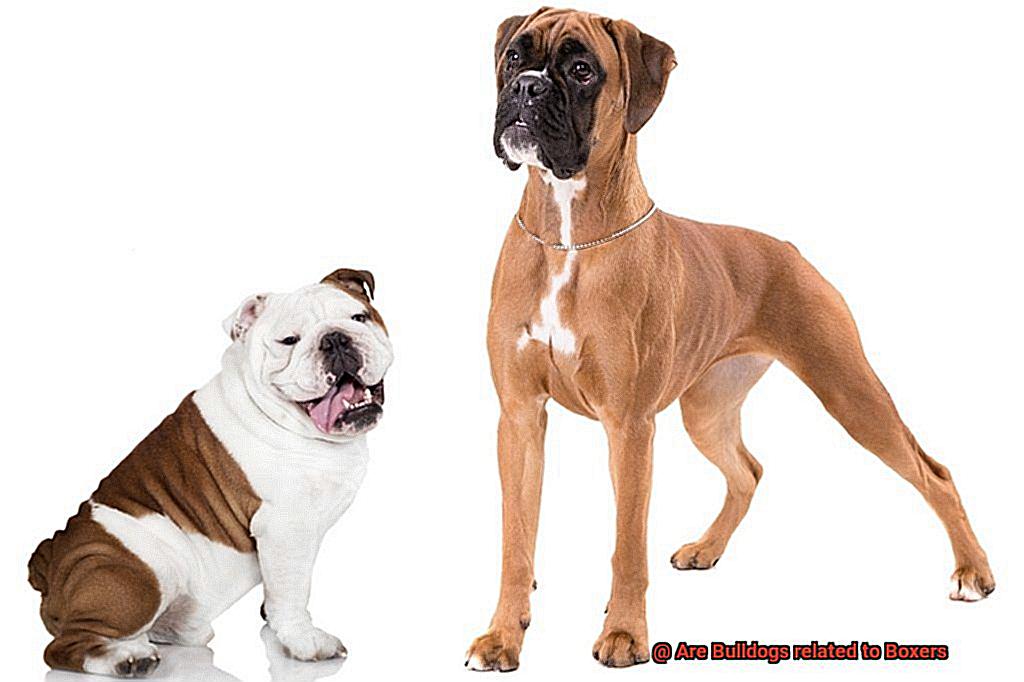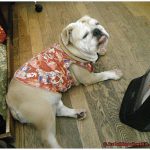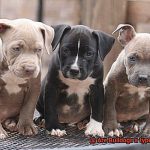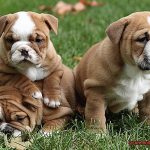Are Bulldogs related to Boxers?
Title: Bulldogs and Boxers: Unveiling the Family Connection
Introduction:
Contents
Hey there, fellow dog enthusiasts. Get ready to dive headfirst into the captivating world of Bulldogs and Boxers. We’re about to unravel the mystery and find out if these two adorable breeds are actually related.
You’ve probably fallen in love with both Bulldogs and Boxers at some point. Can you blame us? Those wrinkly faces and wagging tails are irresistible. But here’s the burning question: are they more than just distant relatives? Is there a deeper bond between them, or is it all just a coincidence?
In this blog post, we’ll dig deep into their history, tracing their roots back in time. We’ll explore their shared traits and unique characteristics that make them stand out from the pack. Brace yourself for an exciting revelation as we uncover the truth behind the family ties of these incredible breeds.
So, grab a comfy spot, get ready for some mind-blowing doggy facts, and let’s embark on this epic quest to unveil the secrets of Bulldogs and Boxers’ family tree.
The Common Ancestor of Bulldogs and Boxers
The Common Ancestor of Bulldogs and Boxers
If you’re a proud owner of a French Bulldog, you may be curious about the origins of your furry friend and how they relate to other breeds like Boxers. Bulldogs and Boxers are both beloved breeds that share a common ancestry. Let’s dive into the fascinating history of these two breeds and explore their shared heritage.
The Molossus: Ancient Roots
To understand the relationship between Bulldogs and Boxers, we need to go back in time to ancient Greece. The common ancestor of these breeds can be traced back to the mighty Molossus. This ancient breed was known for its strength, loyalty, and versatility. Used for guarding livestock and even fighting in battles, the Molossus set the foundation for many modern dog breeds.
The Alaunt: A Key Link
As time passed, the Molossus breed diversified into various regional variations. One of these variations, the Alaunt, played a crucial role in the evolution of both Bulldogs and Boxers. The Alaunt was a remarkable working dog cherished for its hunting skills, endurance, and robust physique. Its muscular build, short coat, and strong jaw can still be observed in Bulldogs and Boxers today.
Bulldogs: From Bull-Baiting to Beloved Companions
During the 19th century, Bulldogs underwent significant changes in appearance and temperament through selective breeding. Originally bred for bull-baiting, a popular sport at the time, Bulldogs were specifically designed to have a strong bite and a low center of gravity. These traits made them adept at gripping onto bulls’ noses during fights.
However, as bull-baiting was eventually banned in England due to its cruelty, the demand for Bulldogs diminished. Breeders then redirected their efforts towards creating a more gentle and companionable version of the breed. This led to the development of the modern Bulldog we know today – a friendly, affectionate, and loyal companion.
Boxers: Versatile Working Dogs
Boxers have a more recent history compared to Bulldogs. They were developed in Germany during the late 19th century by crossing Bulldogs with certain types of German hunting dogs. This intentional crossbreeding aimed to create a versatile working dog capable of assisting hunters in various tasks.
The result of these breeding efforts was a breed that combined the strength and tenacity of Bulldogs with the agility and athleticism of hunting dogs. Boxers quickly gained popularity as guard dogs and excelled in various roles, including police and military work.
While Bulldogs and Boxers share a common ancestry through the Molossus and the Alaunt, it’s important to acknowledge that they are distinct breeds with their own unique traits and characteristics. Their shared heritage contributes to some similarities in appearance and temperament, but they have been selectively bred for different purposes over time.
Physical Characteristics:
Origin of the Bulldog Breed
The Bulldog breed has a fascinating origin story that dates back to 13th century England. Picture this: a time when bull-baiting was all the rage, and Bulldogs were the star players in this violent and brutal sport. These early Bulldogs were larger and more aggressive than the ones we know today, with their muscular build, powerful jaws, and unwavering bravery in the bull-baiting ring. But as times changed, so did the fate of these remarkable dogs.
In the mid-19th century, bull-baiting was banned in England, causing a decline in the popularity of Bulldogs. However, instead of letting the breed fade into obscurity, dedicated breeders stepped up to preserve its unique characteristics and transform it into a more docile and companionable dog. They wanted to create a Bulldog that would be a cherished member of the family rather than a participant in a violent sport.
These breeders employed selective breeding techniques to reduce aggression and increase tolerance towards humans. Bulldogs were crossed with other breeds like Pugs and Terriers to achieve these desired traits. One man who played a significant role in shaping the modern Bulldog breed was Bill George. He worked tirelessly to refine their appearance and temperament, making them more suitable as household pets.
The Bulldog’s distinctive features, such as its pushed-in face, muscular body, and loose skin, were selectively bred for aesthetic purposes. These traits have become iconic of the breed and are instantly recognizable by Bulldog enthusiasts around the world.
Now let’s clear something up: while Boxers might share some physical similarities with Bulldogs, they are not directly related. Boxers originated in Germany during the late 19th century by crossing various breeds like Bulldogs, Bullenbeissers (now extinct), and Mastiffs. Unlike Bulldogs, Boxers were initially bred for hunting large game but later transitioned into versatile working dogs.
Despite not having a direct genetic connection, Bulldogs and Boxers do share some distant ancestors due to the common breeds used in their development. However, it’s important to note that they have distinct breed histories and characteristics. Bulldogs are known for their calm and laid-back nature, while Boxers are generally more lively and energetic.
Both Bulldogs and Boxers have become popular companion dogs in modern times. They are beloved for their loyalty, affectionate nature, and ability to get along well with families and children. These breeds participate in dog shows and competitions worldwide, showcasing their unique qualities and bringing joy to their owners.
Origin of the Boxer Breed
The Fascinating Origins of the Boxer Breed
Have you ever wondered where your lovable Boxer came from? Well, get ready for a journey back in time as we explore the fascinating origins of this incredible breed. From fierce hunters to loyal family pets, the Boxer has quite the story to tell.
The Bullenbeisser Connection:
The Boxer’s roots can be traced back to the Bullenbeisser, a powerful dog used for hunting big game. With its strong bite force and muscular build, the Bullenbeisser was the ideal companion for hunting wild boar and deer. Talk about a dog with some serious bite.
The Brabanter Bullenbeisser Twist:
But the story doesn’t end there. German breeders decided to mix things up by crossing the Bullenbeisser with the smaller Brabanter Bullenbeisser. This clever combination resulted in a more versatile and agile dog – the Boxer we know today.
From Hunter to Hero:
The Boxer’s role quickly shifted from hunting to becoming a hero in World War I. These brave dogs served as messenger dogs, navigating treacherous terrains and delivering crucial messages to soldiers. Their intelligence, loyalty, and trainability made them indispensable allies on the battlefield.
Family Favorite:
After the war, Boxers won over hearts as beloved family pets. Their friendly and playful nature made them perfect companions for children, and their protective instincts endeared them to their families. It’s no wonder they became a favorite choice for households around the world.
The Boxer Club and Standardization:

In 1895, the first Boxer Club was established in Germany, marking a turning point in the breed’s history. This club promoted standardization and preservation of the breed, ensuring that future generations of Boxers would possess their distinctive physical characteristics and friendly yet protective temperament.
Boxers in America:
The Boxer breed made its way across the pond to the United States in the early 20th century, and it didn’t take long for them to become a hit. The American Kennel Club recognized the Boxer in 1904, cementing its status as a respected breed in the dog world.
Versatility and Charm:
Today, Boxers continue to win hearts with their versatility. They serve as loyal family pets, therapy dogs, search and rescue dogs, and even competitive show dogs. Their strong jaw, square muzzle, and alert expression make them stand out wherever they go.
Physical Differences Between Bulldogs and Boxers
Physical Differences Between Bulldogs and Boxers
When it comes to physical differences, Bulldogs and Boxers are like chalk and cheese. As a French Bulldog enthusiast, it’s essential to understand these distinctions to appreciate the uniqueness of your beloved Frenchie. So, let’s dive into the nitty-gritty details of how Bulldogs and Boxers differ physically.
Size and Build
Bulldogs are compact and muscular little powerhouses, while Boxers have a more athletic and leaner physique. Bulldogs usually weigh between 40 to 50 pounds, whereas Boxers can tip the scales anywhere from 55 to 70 pounds. So if you’re looking for a sturdy but smaller companion, the Bulldog might be your perfect match.
Head Shape and Facial Structure
One look at a Bulldog’s face, and you’ll notice their adorable flat face with a pushed-in nose. This endearing feature, known as being brachycephalic, gives them their signature wrinkled appearance. In contrast, Boxers have a more elongated muzzle and a well-defined jawline, giving them an alert expression that is hard to resist.
Ears
Bulldogs have small rose-shaped ears that fold over at the tips, adding to their perky and cute look. On the other hand, Boxers sport larger triangular-shaped ears that stand erect on their head, making them look attentive and ready for action.
Coat
Both Bulldogs and Boxers have short hair, but there are some differences in color and texture. Bulldogs come in various shades, such as brindle, fawn, white, or a combination of these colors. Their coat is smooth and glossy. Boxers often have a solid-colored coat with shades of fawn or brindle. Their coat is slightly coarser in texture compared to Bulldogs but still short.
Stance and Body Structure
Bulldogs have a low-slung stance with a wide chest and thickset limbs, giving them stability but limiting their agility. In contrast, Boxers have a more upright stance with well-muscled legs, making them agile and full of energy.
Tail
Bulldogs typically have a naturally short or screw-shaped tail that is set low on their hindquarters. On the other hand, Boxers have a longer tail that is usually docked to a shorter length. The docking of Boxer tails is a traditional practice done for historical and breed-specific reasons.
Temperamental Differences Between Bulldogs and Boxers
If you’re considering adding a furry friend to your family, it’s essential to understand the temperamental differences between Bulldogs and Boxers. While both breeds have their unique charms, they also have distinct personalities that may or may not be the right fit for your lifestyle. So, let’s dive in and explore the wonderful world of Bulldog and Boxer temperaments.
Bulldogs – Calm and Gentle Companions:
Bulldogs are known for their calm and gentle nature. They are the epitome of laid-back living and enjoy a relaxed lifestyle. These affectionate pooches are often described as good-natured, making them excellent family pets. Bulldogs have a friendly disposition towards other animals and are known to get along well with children. Their calm demeanor and patient attitude make them a perfect match for families with young kids.
However, it’s worth mentioning that Bulldogs can be a bit stubborn at times. They have an independent streak that requires patience during training. But fear not, with consistent and positive reinforcement techniques, Bulldogs can be trained effectively. So, if you’re up for the challenge and ready to establish clear boundaries, a Bulldog could be your perfect companion.
Boxers – Energetic and Playful Athletes:
If you’re looking for a four-legged bundle of energy, look no further than the Boxer breed. These dogs are known for their exuberance and high energy levels. Boxers have a zest for life that is contagious. They thrive on physical activity and mental stimulation, so be prepared for lots of playtime and regular exercise.
Boxers are intelligent dogs that love learning new tricks and commands. They are highly trainable and eager to please their owners. Positive reinforcement is the key to their hearts, so shower them with praise, treats, and belly rubs, and you’ll have a happy and obedient Boxer by your side.
While Boxers are generally good with children, their exuberant nature may be overwhelming for younger kids. It’s essential to teach them proper manners and supervise interactions to avoid any accidental knockdowns during playtime.
Watchdog Abilities:
When it comes to guarding your home, both Bulldogs and Boxers have their unique talents. Bulldogs are natural watchdogs with a protective instinct towards their families. They will alert you if they sense any potential danger. However, Bulldogs are not aggressive by nature and do not make good guard dogs.
On the other hand, Boxers possess strong protective instincts, coupled with their size and strength. They can be excellent guard dogs and will not hesitate to protect their families from any perceived threats. So, if security is a top priority for you, a Boxer might be the perfect choice.
Social Butterflies:
Exercise Requirements for Bulldogs and Boxers
Exercise Requirements for Bulldogs and Boxers: Keeping Your French Bulldog Fit and Healthy
Introduction:
French Bulldogs, also known as Frenchies, are a popular breed known for their adorable appearance and affectionate nature. As a proud Frenchie owner, it is important to understand their exercise requirements to ensure they lead a happy and healthy life. In this section, we will explore the exercise needs of Bulldogs and provide tips on keeping your French Bulldog fit and active.
Understanding the Exercise Needs of Bulldogs:
Bulldogs, including French Bulldogs, are generally considered to be a low-energy breed. They have a sturdy build and tend to prefer shorter bursts of activity rather than long periods of vigorous exercise. This means that daily exercise routines should be tailored to their specific needs to prevent them from becoming overweight or developing health issues.
Recommended Exercise Activities for French Bulldogs:
- Daily Walks: Taking your French Bulldog for daily walks is an excellent way to meet their exercise needs. Aim for two 15-20 minute walks per day, making sure to adjust the intensity based on your Frenchie’s energy levels.
- Playtime: Bulldogs love playtime. Engage in interactive games such as fetch or tug-of-war. Be mindful of their limitations due to their brachycephalic (short-nosed) faces, and avoid activities that could strain their breathing.
- Mental Stimulation: Bulldogs are intelligent dogs that benefit from mental stimulation. Incorporate puzzle toys or training sessions into their daily routine to keep them mentally engaged.
- Swimming: If you have access to a safe and supervised swimming area, swimming can be an excellent low-impact exercise for Bulldogs. It helps build muscle strength without putting too much strain on their joints.
- Indoor Activities: Bulldogs are sensitive to extreme temperatures, so it’s important to have indoor activities for days when weather conditions are unfavorable. Set up an obstacle course or hide treats around the house to keep your Frenchie entertained and active.
Conclusion:
Conclusion
In conclusion, Bulldogs and Boxers can trace their lineage back to the ancient Molossus and Alaunt breeds. These mighty ancestors laid the groundwork for the development of both breeds, each with their own distinct traits and characteristics.
Originally bred for bull-baiting, Bulldogs have undergone selective breeding to cultivate a gentle and companionable temperament. Today, they are renowned for their calm and laid-back nature, making them perfect additions to any family.
On the other hand, Boxers were meticulously crafted in Germany as versatile working dogs. They possess the strength and tenacity inherited from Bulldogs, combined with the agility and athleticism of hunting dogs. Boxers are spirited athletes who thrive on physical activity and mental stimulation.
While Bulldogs and Boxers may share some physical resemblances due to their common ancestry, they also have unique features that set them apart. Bulldogs boast a compact and muscular frame along with a flat face, while Boxers exhibit an athletic physique complemented by an elongated muzzle.
When it comes to temperament, Bulldogs are known for their tranquility and affectionate disposition. They make excellent companions, especially for families with children. On the other hand, Boxers exude energy and playfulness, requiring regular exercise and mental challenges to keep them content.
Ultimately, while direct bloodlines may not connect these two breeds, selective breeding over time has shaped them into beloved companions worldwide.




